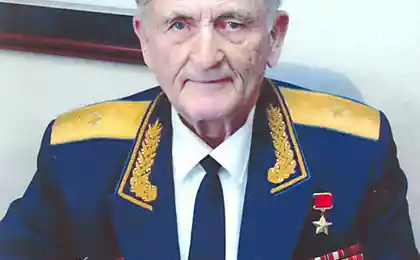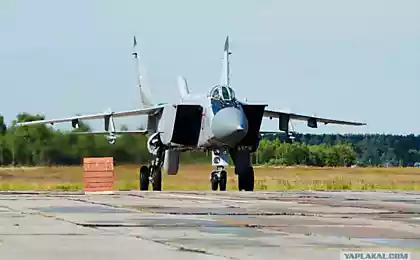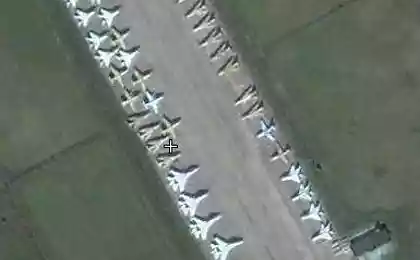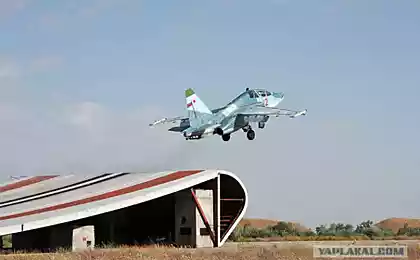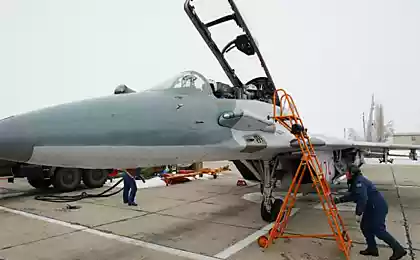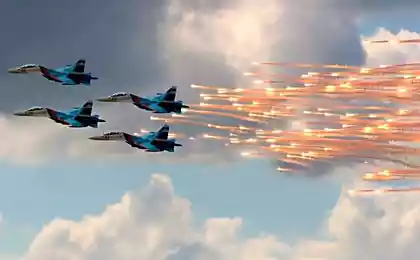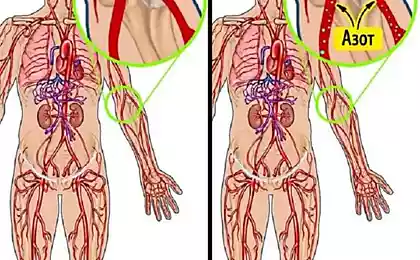3260
MiGs. Famous and not so
All the boys, probably, aviation is a childhood dream: the vast sky, the height and immense freedom when you're in the air ... And I am no exception to this rule, I always liked everything related to aviation, and military aircraft even more so. At the creation of this post, I was inspired by reading this topic here:
Top 10 production aircraft from Sukhoi
And I thought that it would be wrong and not fair to the Mikoyan design bureau did not tell everyone (well, who does not know of course !!) for their wonderful and truly the best aircraft - MiG fighter brand.
Next to continue to be a bunch of little pictures + descriptions and facts related to those models of machines.

Start your story about these little planes with the history of the Mikoyan design bureau.
January 12, 1893 was born Mikhail Gurevich, Soviet aircraft, which together with AI Mikoyan was designing the first Soviet high-speed jet fighters MiG series (reduction given by the names of designers Mikoyan and Gurevich)
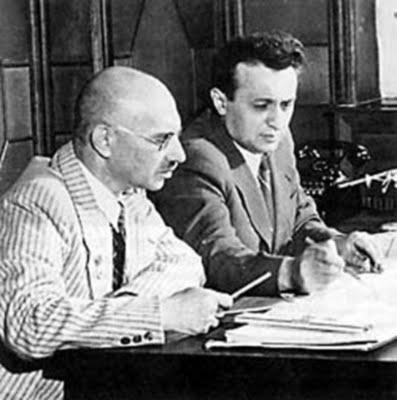
Experimental Design Bureau Artem Mikoyan was founded December 8, 1939, with the support of his brother - Party Anastas Mikoyan by separation from the Moscow Aviation Plant № 1. Aviakhim (order of the Director of PA Voronin) independent special design department (JCE) for the design and construction of high-speed fighter I-200 ("X", Vol. 61). JCE was appointed head of Artem Mikoyan, who graduated 2 years before this academy Zhukovsky and had no self behind no experience designing aircraft. Deputy Mikoyan became an experienced designer Mikhail Gurevich, who worked previously in KB Polikarpov. The design of the new composition of the Bureau recruited from former employees of KB Polikarpov.
In the years 1940-1957 Gurevich - deputy. chief designer from 1957 to 1964, chief designer at OKB Mikoyan. During the war, participated in the creation of advanced aircraft, after the war - in the development of high-speed and supersonic frontline fighters, many of which were made a long time and large series were armed with the Soviet Air Force.
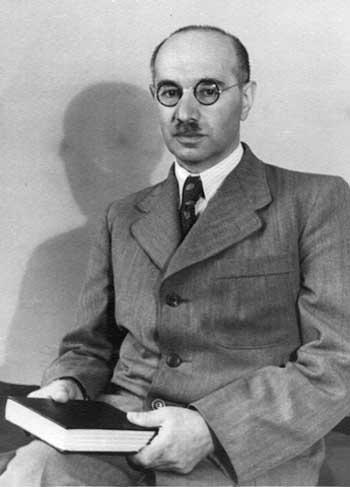
In 1940, Mikoyan and Gurevich MiG-formed 1 ("Mikoyan and Gurevich"), and then his MiG-3. In 1940-1941, the MiG-3 was a series of and participated in the battles of the first period of the Great Patriotic War.
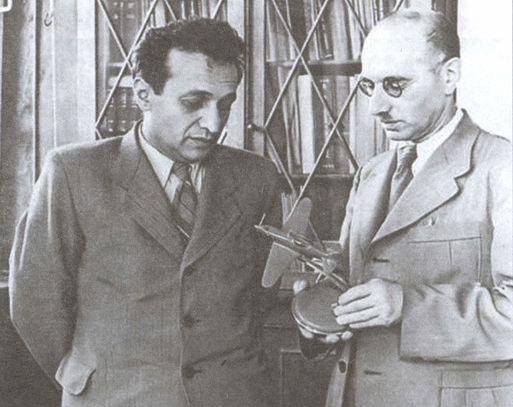
I will start my story from the very first moment, namely ...
MiG-1
MiG-1 (I-200, X, Vol. 61) - Soviet fighter speed
Work on the schematic design of the aircraft I-200 began November 25, 1939 in KB Polikarpov. Since it was intended for use as a high-speed fighter, special attention was paid to the choice of the best aerodynamic forms and ensure the cleanliness of finishing external surfaces, which in combination with a powerful motor was to provide a fairly high flight performance: a top speed of 670 km / h at an altitude of 7000 m ; climb to 5000 m for 4, 6 min, 7000 m for 6, 8 min; flight range of 784 km. In accelerated version with bombs airplane could be used as a ground attack aircraft, and with drop tanks - as a fighter escort.
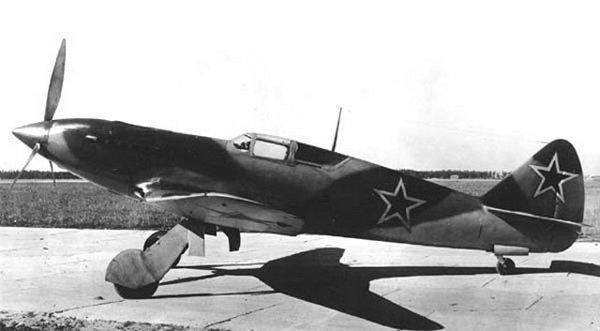
August 18, 1940 in Tushino on parade dedicated to the Day of aviation, the car was first shown to the public. Total in 1940, was built 100 MiG-1. In early 1941 they began to arrive in the combat units. By February 22 the number of MiG-1 produced in the part of the USSR Air Force sent 89 aircraft (74 and 15 oblёtannyh neoblёtannyh). By this time, the plant number 1 had 11 vehicles, including three on Flight station, ready to ship, three - oblёtannyh and packed in boxes - one in the finishing stage, one is willing to flyby and three - in different trials. The first MiG-1 received 31 IAP (city of Kovno Approx. PSBs) and 41 IAP (Bialystok Zap. PSBs)
Elimination of identified trials on I-200 deficiencies led to the emergence of the modified aircraft, known as the MiG-3, and was succeeded in mass production of the MiG-1 in December 1940.
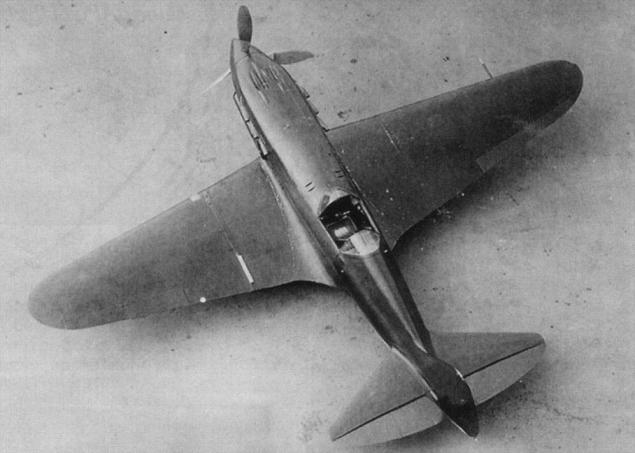
Next is the MiG - 3
At the beginning of the Great Patriotic War, the share of MiGs in the air forces of the country - 89, 9% .Modernizirovanny version of the fighter was designated MiG-3. A single-engine, single-seat, high-altitude air defense interceptor Soviet Red Army Air Force since the Great Patriotic War.
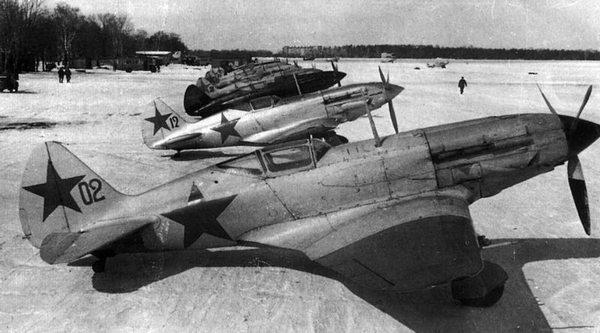
In the MiG-3 deficiencies MiG-1 were largely eliminated, but some of its negative properties could not be overcome. Great was the landing speed - not less than 144 km / h, the lack of maneuverability at low altitudes, despite a significant take-off weight (3350 kg), the speed of the serial MiG-3 at the ground a few exceed 500 km / h at an altitude of 7 th. M reached 640 km / h. It was then the world's highest speed achieved on production aircraft. It was a promising aircraft. However, with the beginning of the war, it became clear that the major air battles take place at low and medium altitudes, where the maneuverability of the MiG-3 drastically worsened. Coupled with weak compared to other fighters armed with this became the main
reason for withdrawal of the MiG-3 production in 1942.
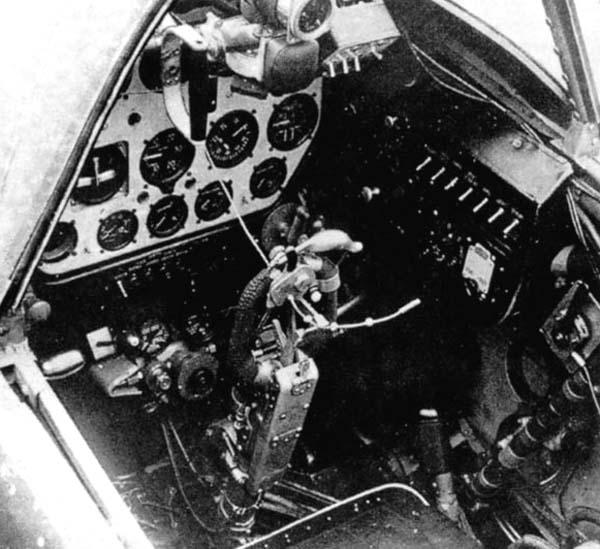
MiG-1 and MiG-3 made a significant contribution to the victory in the war against the Nazi invaders. MiG-3 were armed with two elite fighter regiment, and they fought the most experienced test pilots. It is on the MiG-3 famed Soviet ace AI Pokryshkin claimed his first victory, shooting down a German Me-109E and the MiG-3 shot down an enemy aircraft July 22, 1941 in the first battle over Moscow pilot 2nd Independent Fighter squadron of air defense of Moscow, Mark Gallay High unification and maintainability MiGs provided them with a long life even in wartime. After the war, the MiG-3 for a long time were armed with air defense fighter regiment.
During 1940-1941, the plants produced more than 3, 3 thousand. MiG-3
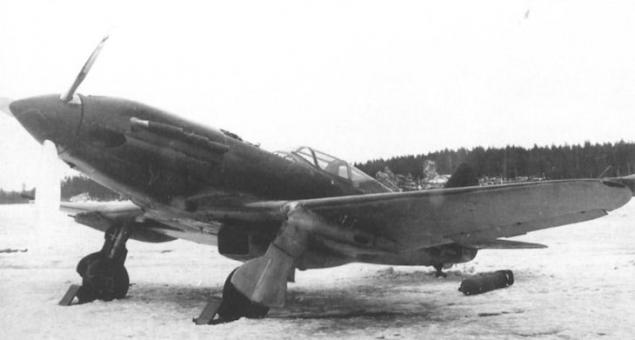
MiG-5
DIS-200 (MiG-5, T) - a twin-engine single-seat fighter escort tactical bombers engines AM-37 (2h1400 hp.). The first prototype fighter DIS-200 first flew on June 11, 1941, piloted by pilot for tester AI Zhukov.
DIS-200 was designed to perform the following basic tasks:
-support bombers;
-proryv enemy air defense;
-working patrol in areas remote from their bases, and reconnaissance to fight deep behind enemy lines;
Using as a dive bomber or torpedo.
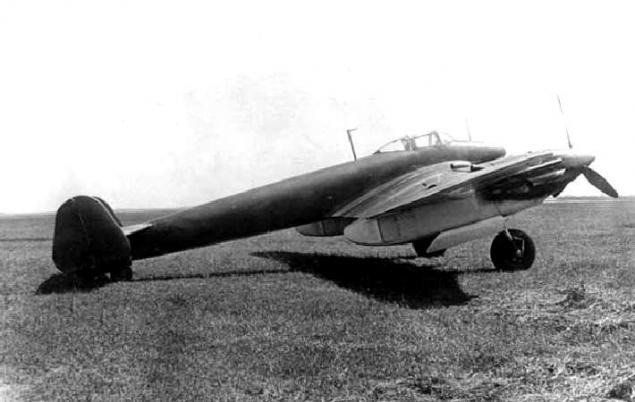
The aircraft was to have a pretty powerful weapons: a gun MP-6 23 mm (200 -300 rounds of ammunition) to easily removable carriage in the forward fuselage, two 12 mm machine gun BS 7 (by 300-600 rounds) and four 7, 62 mm machine gun ShKAS (at 1000-1500 rounds) in the center section. Originally planned to install 23-gun load cells, but prototyping Commission and the Air Force recommended to replace it on the MP-6. Instead of guns in the plane accelerated version can be hung bombs weighing up to 1,000 kg, or one torpedo parachute. Planned installation of two jet guns PO-82 to protect the rear hemisphere. During the construction of the aircraft was in the setting of the center section of two guns MP-6 with 120 rounds ammunition.
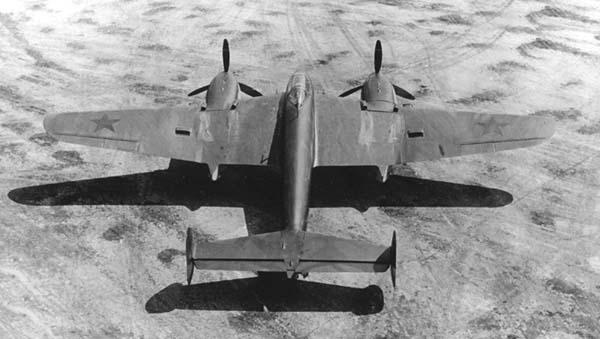
In 1942, work on the fighter DIS-200 engines AM-37 were prekrascheny.Vtoroy instance DIS-200 in May 1941, was ordered to build the engine M-82. In a third instance of the aircraft were
made the middle part of the fuselage, wing spars and a partial billet parts. However, due to an overload of pilot production, work on it was discontinued in August 1941
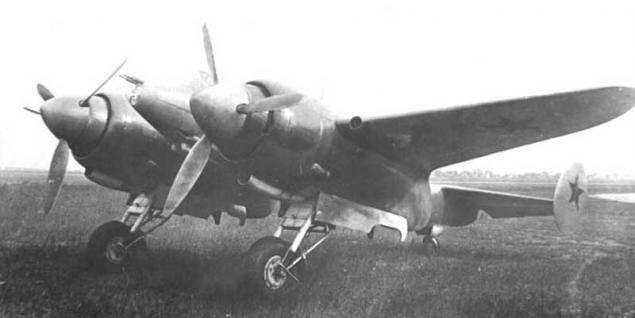
Next began the era of jet aircraft and the first was:
MiG-9
MiG-9 (NATO: Fargo; originally - Type 1) - the first Soviet turbojet fighter raised in the air. Developed in OKB Mikoyan and Gurevich, made its first flight April 24, 1946. The 1946-1948 built 602 samolёta.V end of World War II in the Soviet Union intensified work on the creation of jet technology. Just four EDO (Mikoyan, Yakovlev and Sukhoi Lavochkin) initiated the development of jet fighters. Due to the fact that by this time the domestic aviation industry did not own a jet engine, the first jet aircraft designed by captured German Junkers JUMO-004 and BMW-003A. By this time in Germany, the US and Britain have been developed and put into production the first samples of jet technology. Soviet designers and manufacturers were to promptly reduce the serious gap in this area.

MiG-9, up in the air for two hours before his rival, became the first Soviet jet fighter. April 24, 1946 11 h. 12 min. test pilot Alexei Grinchik made the first takeoff, and on the same day 13 hours 56 minutes on the Yak-15 made its first five-minute flight test pilot Mikhail Ivanov. The flight, which lasted 6 minutes, was successful.
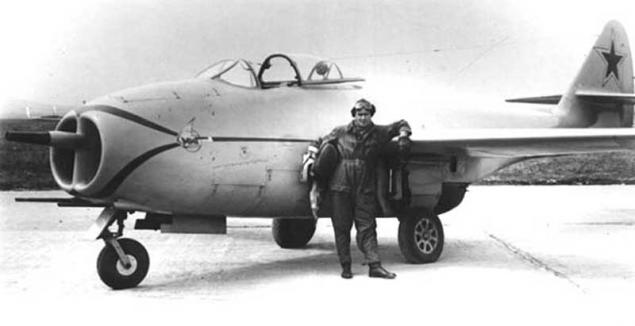
Fighter armed with a 37 mm gun systems AE Nudelman N-37 with ammunition 40 rounds (the first aircraft armed with 57 mm gun H-57, they were subsequently re-equipped gun H-37) and two 23-mm cannon system A . E. Nudelman and A. Suranov NS 23km with ammunition on 80 patronov.Pritsel on the first production machine - Collimator CRP-1, then automatic rifle sight ASP-1H. In the early MiG-9 subsequently CRP-1 was replaced by a TSA-1N.V left wing housed fotokinopulemёt C-13.
The plan re Force jet fighters MiG-9 received the following parts:
14th Fighter Air 303rd Fighter Aviation Division of the 1st Air Army.
5 th Fighter Air Corps 309th Fighter Air Division of the 7th Air Force.
1st Guards Fighter Air 3rd Guards Fighter Air Division 16th Air Army.
10th Fighter Air 15th Fighter Air Division 14th Air Army.
11th Fighter Air 5th Guards Fighter Air Division 15th Air Army.
1st training-methodical aviatsentr
Admission to combat units and machines technical flight personnel treated very cautiously. Many pilots were afraid to fly on airplanes unaccustomed eye, and it had a pretty simple psychological reason - a jet aircraft was not a screw. Art does not have enough experience to service aircraft, as well as the time for the development of new materiel. All this leads to accidents, often associated with structural deficiencies samolёta.Na replace the MiG-9 came a new, more advanced MiG-15, but the success that he received not only in the USSR but also in the whole world, would not be possible without experience and without those "bumps" received and stuffed in the design, construction, testing, mass production and, of course, the operation of its predecessor - the first Soviet jet fighter MiG-9. To the extent that a new army materiel MiG-9 in the early 50's were written off or transferred to China.
In total, the three-year series-built, 604 were manufactured MiG-9 small, and the first major series. Of these 10 aircraft in 1946, 292 - 1947 and 302 machines in 1948. Serial production of the fighter was discontinued in 1948 due to the transition to the MiG-15, considered one of the best in his time.
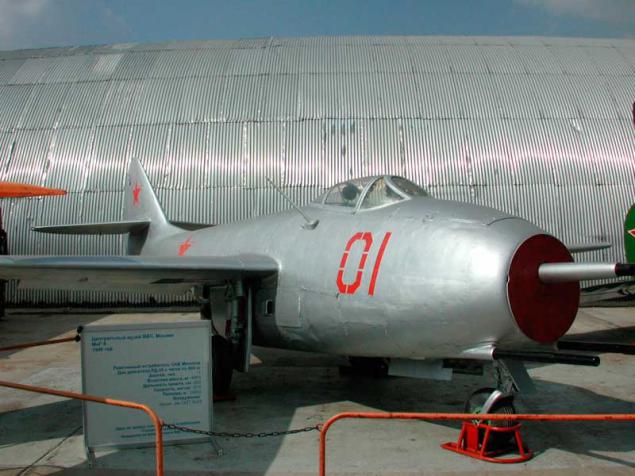
MiG-15
MiG-15 (product C-310 aircraft and on NATO codification: Fagot) - Soviet fighter developed by OKB Mikoyan and Gurevich in the late 1940s. The most massive jet combat aircraft in aviation history, was in service in many countries.
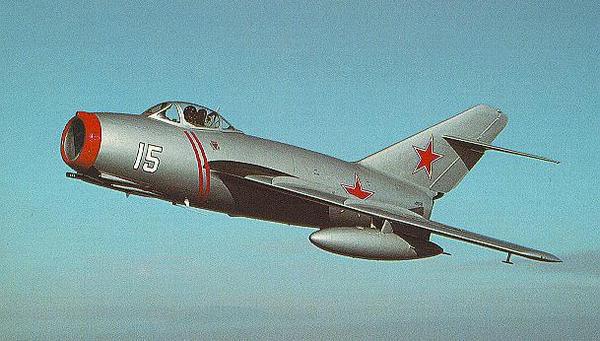
December 30, 1947 in the air rose prototype of the first jet aircraft. He became the first Soviet serial fighter with swept (35 degrees) wing. Another innovation implemented in this model - chassis with a new wheel. Distinctive features of the MiG-15 were the reliability and simplicity of design, high, flight and performance and powerful weaponry - one 37 mm gun, and two guns 23th caliber. Thanks to climb, maximum speed and range ceiling flight this was the best fighter of the Soviet fighters of the time.
At an altitude of 5000m speed MIG-1021 was 15 km / h and at an altitude of 10,000 meters - 974 km / h. Serial production of the MiG-15 and its various modifications led to
nine (!) aircraft factories of the Soviet Union. There were built 15 560 fighters of this type. The MiG-15 series was produced in Poland and Czechoslovakia by Soviet license. All the world was issued more than 18 thousand. These aircraft, which is a record in the class of fighter jets
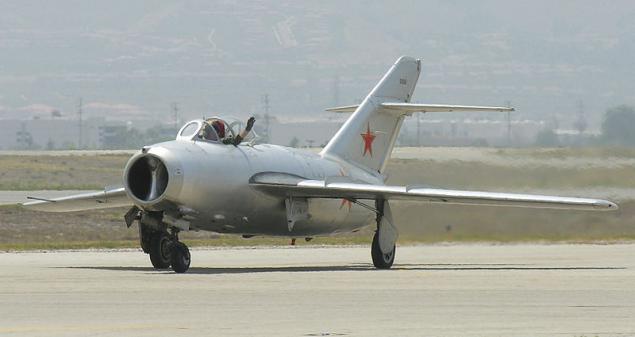
For the first time the MiG-15 was used in combat in early 1950. Fighters were deployed in China to cover the area of the city of Shanghai from the raids of the Kuomintang aviation. Skirmishes with the enemy were rare, and the MiG-15 pilots chalked up only one downed aircraft - P-38 reconnaissance
The main war and "finest hour" in the history of the MiG-15 was the war in Korea. It was the first war in the history of aviation jet engines and the first air combat jet aircraft. BBC North Korea were completely destroyed in the first few months of fighting, and in the middle of autumn 1950 UN aircraft had air superiority. To provide air cover to enter the war the Chinese army of the USSR sent to China 64th Fighter Air, armed MiG-15.
Highest scoring pilot said Eugene Pepeliaev behind which recorded 23 aerial victories. Incidentally, Pepeliaev knocked and forced to crash landing the only F-86, which was delivered to study in TsAGI. The US side stated that it was shot down 792 MiGs and 108 other aircraft, at a loss of 78 F-86. Since each
party brings its statistics, it is difficult to judge the real state of things.

The MiG-15 is not directly involved in the Vietnam War. As far as is known, the North Vietnamese Air Force were armed only trainer MiG-15UTI who have not committed sorties. In general, the main role of the MiG-15 in Asia and Africa has been reduced to the preparation of personnel for in flights on the more modern Soviet fighters
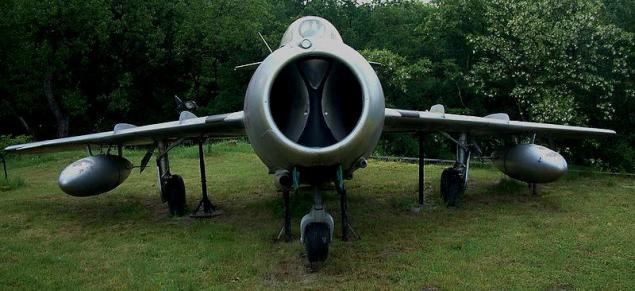
MiG-17
MiG-17 (product SI-330 aircraft and on NATO codification: Fresco, Freskou - Eng. Fresco) - Soviet jet fighter developed by OKB Mikoyan and Gurevich in the late 1940s. The first of the series of fighters allowed achieving the speed of sound, but the fighting was considered transonic flight. Intended to replace the MiG-15. Was in service around the world and has been used in a number of armed conflicts, including in combat in Vietnam and the Middle East.
The success of the MiG-15 made the inevitable birth of his more advanced model - MiG-17.Samolёt was built in late 1951 and was designated as I-340. Flight tests conducted pilots GA Sedov and KK Kokkinaki and lead engineer for testing appointed AV Minayeva. In tests the aircraft reached a speed of 1193 km / h at an altitude of 5000 m and a rate of climb of 41 m / s.
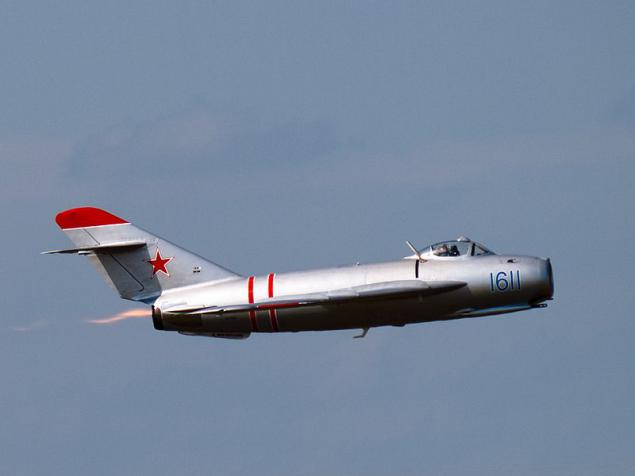
Soviet MiG-17 brought to combat violators air border of the USSR. For example, the Soviet pilots fought with automatic drifting balloons and other LA.29 July 1953 Soviet MiG-17 was shot down an American spy plane RB-50. Couple fighters (pilots - Captain Rybakov, Lieutenant Yablonsky) rose from the aerodrome Mykolaivka and intercept the intruder. As a result of defensive fire RB-50 is one of the fighters was damaged, after which the offender was shot down. Of the 17 people on board, only one survived
June 27, 1958 a pair of Soviet MiG-17 shot down the aircraft C-118 US Air Force.
September 2, 1958 four Soviet MiG-17 shot down a reconnaissance C-130 US Air Force, the entire crew, 17 people died.
September 21, 1970 the Soviet MiG-17F aircraft shot down an American U-8 Semintole.
In all the years of the war, North Vietnamese MiG-17 flew about 2,000 combat sorties. In the air battles were shot down 143 enemy aircrafts, with loss of their 75-110.
Arab MiG-17 is widely used in a number of military conflicts, the first of which began fighting in Egypt in the autumn of 1956. Enemy aircraft MiG-17F in this war was the French fighter "Dassault Mister IV» and «Hurricane»
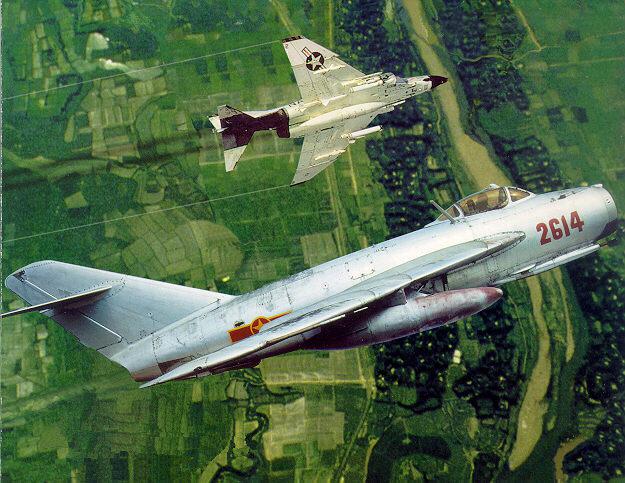
All were released in 7999 and the Soviet Union in 2825 under license in other countries. In the USSR, the MiG-17 and its variants were retired in the 70s.

MiG-19
MiG-19 - (9-CM product at NATO codification: Farmer - «Farmer") - a Soviet jet fighter single second [3] generation, developed by OKB Mikoyan and Gurevich in the early 1950s. The first Soviet supersonic fighter serial, widely used in the Soviet air defense system and shipped abroad. Coeval American fighter F-100 Super Sabre, although Vietnam resisted and later the F-4 Phantom II.
MiG-19 - the world's first aircraft capable of when you start from the ground to reach supersonic speed in level flight. After successful testing of this fighter appeared various modifications with increased armament.
Top 10 production aircraft from Sukhoi
And I thought that it would be wrong and not fair to the Mikoyan design bureau did not tell everyone (well, who does not know of course !!) for their wonderful and truly the best aircraft - MiG fighter brand.
Next to continue to be a bunch of little pictures + descriptions and facts related to those models of machines.

Start your story about these little planes with the history of the Mikoyan design bureau.
January 12, 1893 was born Mikhail Gurevich, Soviet aircraft, which together with AI Mikoyan was designing the first Soviet high-speed jet fighters MiG series (reduction given by the names of designers Mikoyan and Gurevich)

Experimental Design Bureau Artem Mikoyan was founded December 8, 1939, with the support of his brother - Party Anastas Mikoyan by separation from the Moscow Aviation Plant № 1. Aviakhim (order of the Director of PA Voronin) independent special design department (JCE) for the design and construction of high-speed fighter I-200 ("X", Vol. 61). JCE was appointed head of Artem Mikoyan, who graduated 2 years before this academy Zhukovsky and had no self behind no experience designing aircraft. Deputy Mikoyan became an experienced designer Mikhail Gurevich, who worked previously in KB Polikarpov. The design of the new composition of the Bureau recruited from former employees of KB Polikarpov.
In the years 1940-1957 Gurevich - deputy. chief designer from 1957 to 1964, chief designer at OKB Mikoyan. During the war, participated in the creation of advanced aircraft, after the war - in the development of high-speed and supersonic frontline fighters, many of which were made a long time and large series were armed with the Soviet Air Force.

In 1940, Mikoyan and Gurevich MiG-formed 1 ("Mikoyan and Gurevich"), and then his MiG-3. In 1940-1941, the MiG-3 was a series of and participated in the battles of the first period of the Great Patriotic War.

I will start my story from the very first moment, namely ...
MiG-1
MiG-1 (I-200, X, Vol. 61) - Soviet fighter speed
Work on the schematic design of the aircraft I-200 began November 25, 1939 in KB Polikarpov. Since it was intended for use as a high-speed fighter, special attention was paid to the choice of the best aerodynamic forms and ensure the cleanliness of finishing external surfaces, which in combination with a powerful motor was to provide a fairly high flight performance: a top speed of 670 km / h at an altitude of 7000 m ; climb to 5000 m for 4, 6 min, 7000 m for 6, 8 min; flight range of 784 km. In accelerated version with bombs airplane could be used as a ground attack aircraft, and with drop tanks - as a fighter escort.

August 18, 1940 in Tushino on parade dedicated to the Day of aviation, the car was first shown to the public. Total in 1940, was built 100 MiG-1. In early 1941 they began to arrive in the combat units. By February 22 the number of MiG-1 produced in the part of the USSR Air Force sent 89 aircraft (74 and 15 oblёtannyh neoblёtannyh). By this time, the plant number 1 had 11 vehicles, including three on Flight station, ready to ship, three - oblёtannyh and packed in boxes - one in the finishing stage, one is willing to flyby and three - in different trials. The first MiG-1 received 31 IAP (city of Kovno Approx. PSBs) and 41 IAP (Bialystok Zap. PSBs)
Elimination of identified trials on I-200 deficiencies led to the emergence of the modified aircraft, known as the MiG-3, and was succeeded in mass production of the MiG-1 in December 1940.

Next is the MiG - 3
At the beginning of the Great Patriotic War, the share of MiGs in the air forces of the country - 89, 9% .Modernizirovanny version of the fighter was designated MiG-3. A single-engine, single-seat, high-altitude air defense interceptor Soviet Red Army Air Force since the Great Patriotic War.

In the MiG-3 deficiencies MiG-1 were largely eliminated, but some of its negative properties could not be overcome. Great was the landing speed - not less than 144 km / h, the lack of maneuverability at low altitudes, despite a significant take-off weight (3350 kg), the speed of the serial MiG-3 at the ground a few exceed 500 km / h at an altitude of 7 th. M reached 640 km / h. It was then the world's highest speed achieved on production aircraft. It was a promising aircraft. However, with the beginning of the war, it became clear that the major air battles take place at low and medium altitudes, where the maneuverability of the MiG-3 drastically worsened. Coupled with weak compared to other fighters armed with this became the main
reason for withdrawal of the MiG-3 production in 1942.

MiG-1 and MiG-3 made a significant contribution to the victory in the war against the Nazi invaders. MiG-3 were armed with two elite fighter regiment, and they fought the most experienced test pilots. It is on the MiG-3 famed Soviet ace AI Pokryshkin claimed his first victory, shooting down a German Me-109E and the MiG-3 shot down an enemy aircraft July 22, 1941 in the first battle over Moscow pilot 2nd Independent Fighter squadron of air defense of Moscow, Mark Gallay High unification and maintainability MiGs provided them with a long life even in wartime. After the war, the MiG-3 for a long time were armed with air defense fighter regiment.
During 1940-1941, the plants produced more than 3, 3 thousand. MiG-3

MiG-5
DIS-200 (MiG-5, T) - a twin-engine single-seat fighter escort tactical bombers engines AM-37 (2h1400 hp.). The first prototype fighter DIS-200 first flew on June 11, 1941, piloted by pilot for tester AI Zhukov.
DIS-200 was designed to perform the following basic tasks:
-support bombers;
-proryv enemy air defense;
-working patrol in areas remote from their bases, and reconnaissance to fight deep behind enemy lines;
Using as a dive bomber or torpedo.

The aircraft was to have a pretty powerful weapons: a gun MP-6 23 mm (200 -300 rounds of ammunition) to easily removable carriage in the forward fuselage, two 12 mm machine gun BS 7 (by 300-600 rounds) and four 7, 62 mm machine gun ShKAS (at 1000-1500 rounds) in the center section. Originally planned to install 23-gun load cells, but prototyping Commission and the Air Force recommended to replace it on the MP-6. Instead of guns in the plane accelerated version can be hung bombs weighing up to 1,000 kg, or one torpedo parachute. Planned installation of two jet guns PO-82 to protect the rear hemisphere. During the construction of the aircraft was in the setting of the center section of two guns MP-6 with 120 rounds ammunition.

In 1942, work on the fighter DIS-200 engines AM-37 were prekrascheny.Vtoroy instance DIS-200 in May 1941, was ordered to build the engine M-82. In a third instance of the aircraft were
made the middle part of the fuselage, wing spars and a partial billet parts. However, due to an overload of pilot production, work on it was discontinued in August 1941

Next began the era of jet aircraft and the first was:
MiG-9
MiG-9 (NATO: Fargo; originally - Type 1) - the first Soviet turbojet fighter raised in the air. Developed in OKB Mikoyan and Gurevich, made its first flight April 24, 1946. The 1946-1948 built 602 samolёta.V end of World War II in the Soviet Union intensified work on the creation of jet technology. Just four EDO (Mikoyan, Yakovlev and Sukhoi Lavochkin) initiated the development of jet fighters. Due to the fact that by this time the domestic aviation industry did not own a jet engine, the first jet aircraft designed by captured German Junkers JUMO-004 and BMW-003A. By this time in Germany, the US and Britain have been developed and put into production the first samples of jet technology. Soviet designers and manufacturers were to promptly reduce the serious gap in this area.

MiG-9, up in the air for two hours before his rival, became the first Soviet jet fighter. April 24, 1946 11 h. 12 min. test pilot Alexei Grinchik made the first takeoff, and on the same day 13 hours 56 minutes on the Yak-15 made its first five-minute flight test pilot Mikhail Ivanov. The flight, which lasted 6 minutes, was successful.

Fighter armed with a 37 mm gun systems AE Nudelman N-37 with ammunition 40 rounds (the first aircraft armed with 57 mm gun H-57, they were subsequently re-equipped gun H-37) and two 23-mm cannon system A . E. Nudelman and A. Suranov NS 23km with ammunition on 80 patronov.Pritsel on the first production machine - Collimator CRP-1, then automatic rifle sight ASP-1H. In the early MiG-9 subsequently CRP-1 was replaced by a TSA-1N.V left wing housed fotokinopulemёt C-13.
The plan re Force jet fighters MiG-9 received the following parts:
14th Fighter Air 303rd Fighter Aviation Division of the 1st Air Army.
5 th Fighter Air Corps 309th Fighter Air Division of the 7th Air Force.
1st Guards Fighter Air 3rd Guards Fighter Air Division 16th Air Army.
10th Fighter Air 15th Fighter Air Division 14th Air Army.
11th Fighter Air 5th Guards Fighter Air Division 15th Air Army.
1st training-methodical aviatsentr
Admission to combat units and machines technical flight personnel treated very cautiously. Many pilots were afraid to fly on airplanes unaccustomed eye, and it had a pretty simple psychological reason - a jet aircraft was not a screw. Art does not have enough experience to service aircraft, as well as the time for the development of new materiel. All this leads to accidents, often associated with structural deficiencies samolёta.Na replace the MiG-9 came a new, more advanced MiG-15, but the success that he received not only in the USSR but also in the whole world, would not be possible without experience and without those "bumps" received and stuffed in the design, construction, testing, mass production and, of course, the operation of its predecessor - the first Soviet jet fighter MiG-9. To the extent that a new army materiel MiG-9 in the early 50's were written off or transferred to China.
In total, the three-year series-built, 604 were manufactured MiG-9 small, and the first major series. Of these 10 aircraft in 1946, 292 - 1947 and 302 machines in 1948. Serial production of the fighter was discontinued in 1948 due to the transition to the MiG-15, considered one of the best in his time.

MiG-15
MiG-15 (product C-310 aircraft and on NATO codification: Fagot) - Soviet fighter developed by OKB Mikoyan and Gurevich in the late 1940s. The most massive jet combat aircraft in aviation history, was in service in many countries.

December 30, 1947 in the air rose prototype of the first jet aircraft. He became the first Soviet serial fighter with swept (35 degrees) wing. Another innovation implemented in this model - chassis with a new wheel. Distinctive features of the MiG-15 were the reliability and simplicity of design, high, flight and performance and powerful weaponry - one 37 mm gun, and two guns 23th caliber. Thanks to climb, maximum speed and range ceiling flight this was the best fighter of the Soviet fighters of the time.
At an altitude of 5000m speed MIG-1021 was 15 km / h and at an altitude of 10,000 meters - 974 km / h. Serial production of the MiG-15 and its various modifications led to
nine (!) aircraft factories of the Soviet Union. There were built 15 560 fighters of this type. The MiG-15 series was produced in Poland and Czechoslovakia by Soviet license. All the world was issued more than 18 thousand. These aircraft, which is a record in the class of fighter jets

For the first time the MiG-15 was used in combat in early 1950. Fighters were deployed in China to cover the area of the city of Shanghai from the raids of the Kuomintang aviation. Skirmishes with the enemy were rare, and the MiG-15 pilots chalked up only one downed aircraft - P-38 reconnaissance
The main war and "finest hour" in the history of the MiG-15 was the war in Korea. It was the first war in the history of aviation jet engines and the first air combat jet aircraft. BBC North Korea were completely destroyed in the first few months of fighting, and in the middle of autumn 1950 UN aircraft had air superiority. To provide air cover to enter the war the Chinese army of the USSR sent to China 64th Fighter Air, armed MiG-15.
Highest scoring pilot said Eugene Pepeliaev behind which recorded 23 aerial victories. Incidentally, Pepeliaev knocked and forced to crash landing the only F-86, which was delivered to study in TsAGI. The US side stated that it was shot down 792 MiGs and 108 other aircraft, at a loss of 78 F-86. Since each
party brings its statistics, it is difficult to judge the real state of things.

The MiG-15 is not directly involved in the Vietnam War. As far as is known, the North Vietnamese Air Force were armed only trainer MiG-15UTI who have not committed sorties. In general, the main role of the MiG-15 in Asia and Africa has been reduced to the preparation of personnel for in flights on the more modern Soviet fighters

MiG-17
MiG-17 (product SI-330 aircraft and on NATO codification: Fresco, Freskou - Eng. Fresco) - Soviet jet fighter developed by OKB Mikoyan and Gurevich in the late 1940s. The first of the series of fighters allowed achieving the speed of sound, but the fighting was considered transonic flight. Intended to replace the MiG-15. Was in service around the world and has been used in a number of armed conflicts, including in combat in Vietnam and the Middle East.
The success of the MiG-15 made the inevitable birth of his more advanced model - MiG-17.Samolёt was built in late 1951 and was designated as I-340. Flight tests conducted pilots GA Sedov and KK Kokkinaki and lead engineer for testing appointed AV Minayeva. In tests the aircraft reached a speed of 1193 km / h at an altitude of 5000 m and a rate of climb of 41 m / s.

Soviet MiG-17 brought to combat violators air border of the USSR. For example, the Soviet pilots fought with automatic drifting balloons and other LA.29 July 1953 Soviet MiG-17 was shot down an American spy plane RB-50. Couple fighters (pilots - Captain Rybakov, Lieutenant Yablonsky) rose from the aerodrome Mykolaivka and intercept the intruder. As a result of defensive fire RB-50 is one of the fighters was damaged, after which the offender was shot down. Of the 17 people on board, only one survived
June 27, 1958 a pair of Soviet MiG-17 shot down the aircraft C-118 US Air Force.
September 2, 1958 four Soviet MiG-17 shot down a reconnaissance C-130 US Air Force, the entire crew, 17 people died.
September 21, 1970 the Soviet MiG-17F aircraft shot down an American U-8 Semintole.
In all the years of the war, North Vietnamese MiG-17 flew about 2,000 combat sorties. In the air battles were shot down 143 enemy aircrafts, with loss of their 75-110.
Arab MiG-17 is widely used in a number of military conflicts, the first of which began fighting in Egypt in the autumn of 1956. Enemy aircraft MiG-17F in this war was the French fighter "Dassault Mister IV» and «Hurricane»

All were released in 7999 and the Soviet Union in 2825 under license in other countries. In the USSR, the MiG-17 and its variants were retired in the 70s.

MiG-19
MiG-19 - (9-CM product at NATO codification: Farmer - «Farmer") - a Soviet jet fighter single second [3] generation, developed by OKB Mikoyan and Gurevich in the early 1950s. The first Soviet supersonic fighter serial, widely used in the Soviet air defense system and shipped abroad. Coeval American fighter F-100 Super Sabre, although Vietnam resisted and later the F-4 Phantom II.
MiG-19 - the world's first aircraft capable of when you start from the ground to reach supersonic speed in level flight. After successful testing of this fighter appeared various modifications with increased armament.




